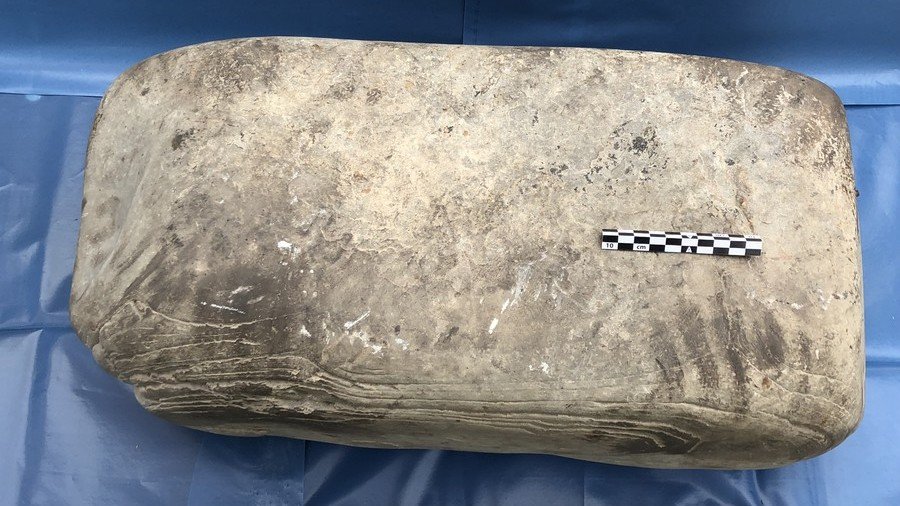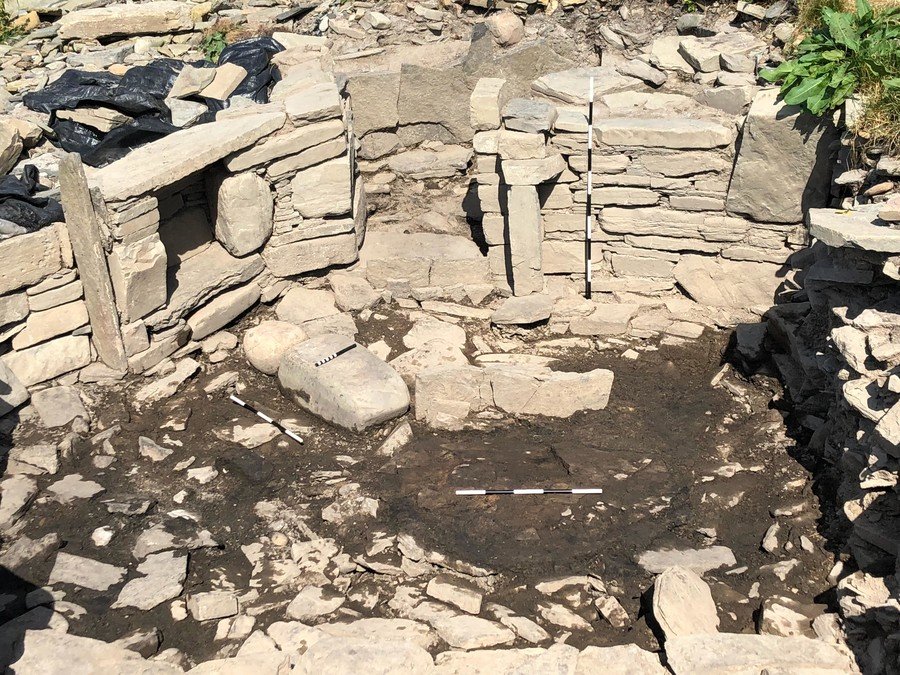'Never seen anything like it’: Ancient handprints discovered in Scotland (PHOTOS)

When archaeologists in Orkney discovered a handprint on an ancient anvil, they assumed they had inadvertently left the impression. However, the mark was actually a perfectly-preserved print belonging to an Iron Age metalsmith.
Researchers on the Orkney island of Rousay made the incredible discovery this week. The Swandro Orkney Coastal Archaeology Trust has been working on excavating an Iron Age settlement on the island in a concerted effort to complete the dig before the area is eroded by the encroaching sea.
READ MORE: Ancient electoral propaganda: Pompeii political slogans uncovered from ruins (PHOTOS)
"We were taking up the two stones that were used as anvils. When they were cleaned, we noticed that one of them had what looked like handprints on,” lead archaeologist Dr Julie Bond told BBC Radio Orkney. "I have never seen anything like this before. It's unique as far as I know.”
The stone anvil also contains knee marks thought to have belonged to the metalsmith.

“The marks are basically greasy carbon rubbed onto the stone,” Swandro Orkney Coastal Archaeology Trust explained. “The knee marks are presumably from kneeling very close to the anvil when working and rubbing against it repeatedly.”
The Picts lived in the area during the late Iron Age and early Medieval periods. Bond said that because the building is Pictish, the prints are estimated to be between 1,000 and 1,500 years old.
If you like this story, share it with a friend!
Subscribe to RT newsletter to get stories the mainstream media won’t tell you.














